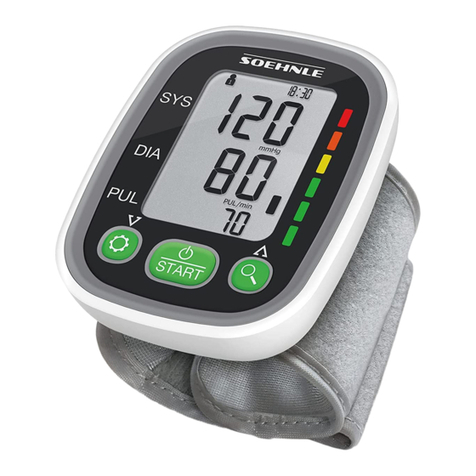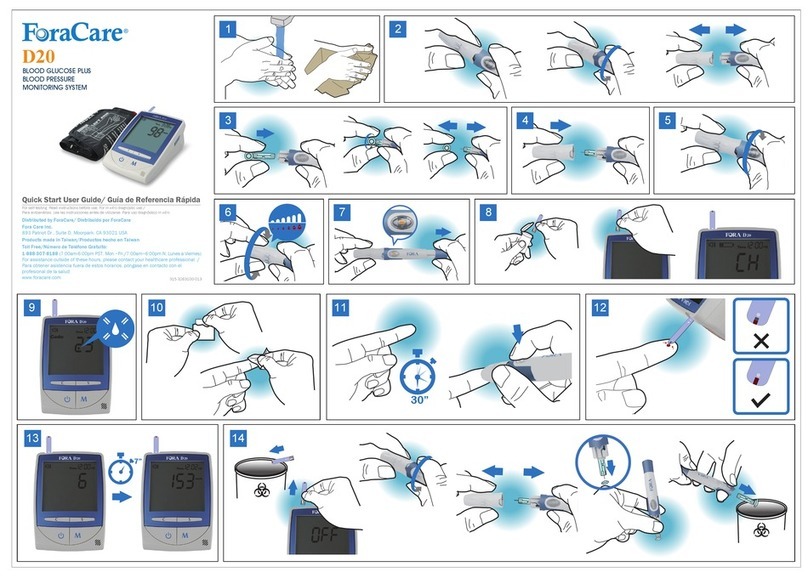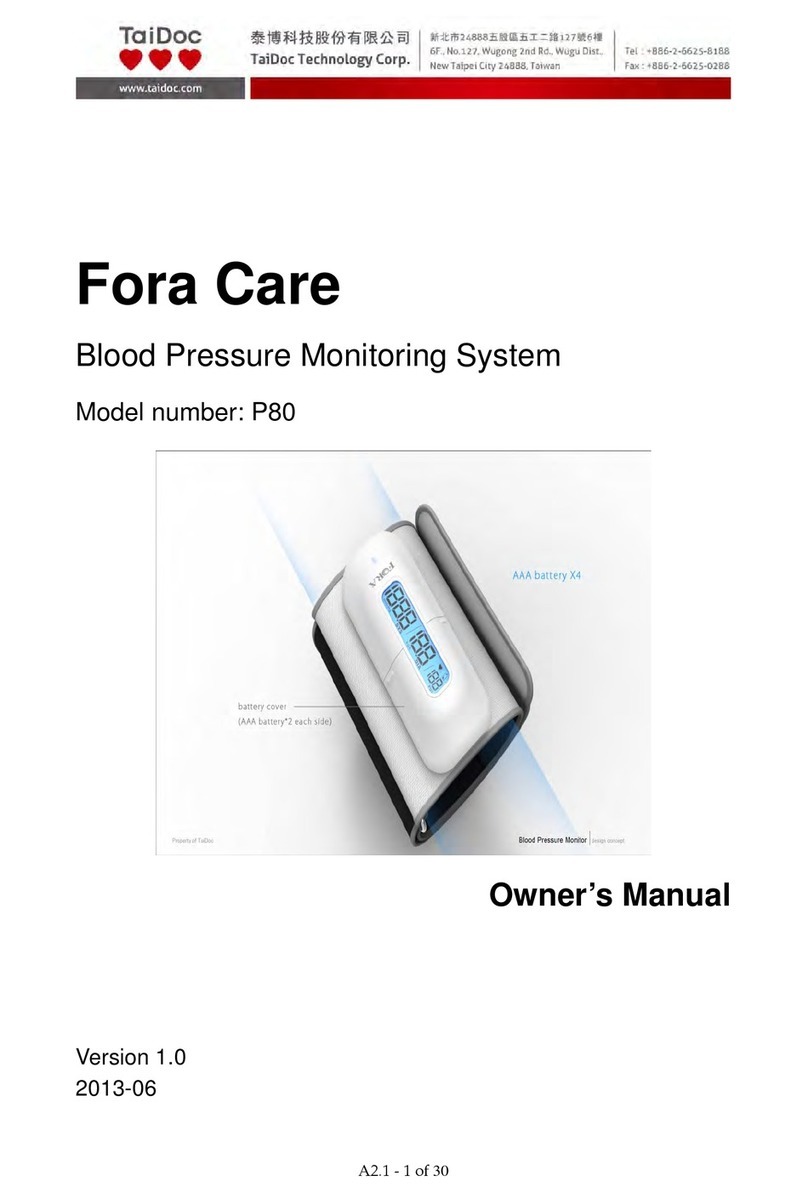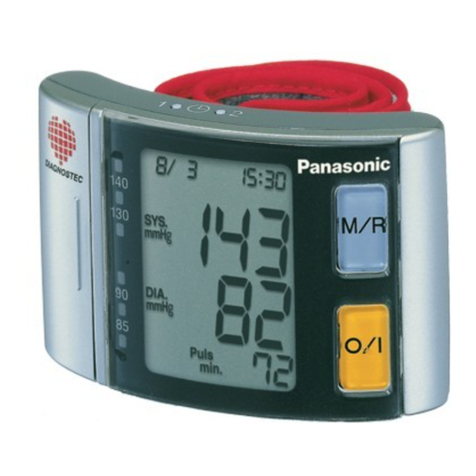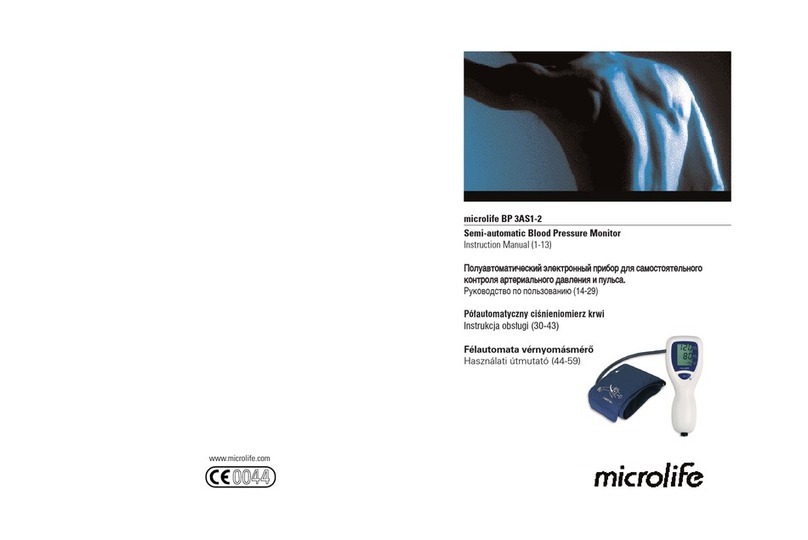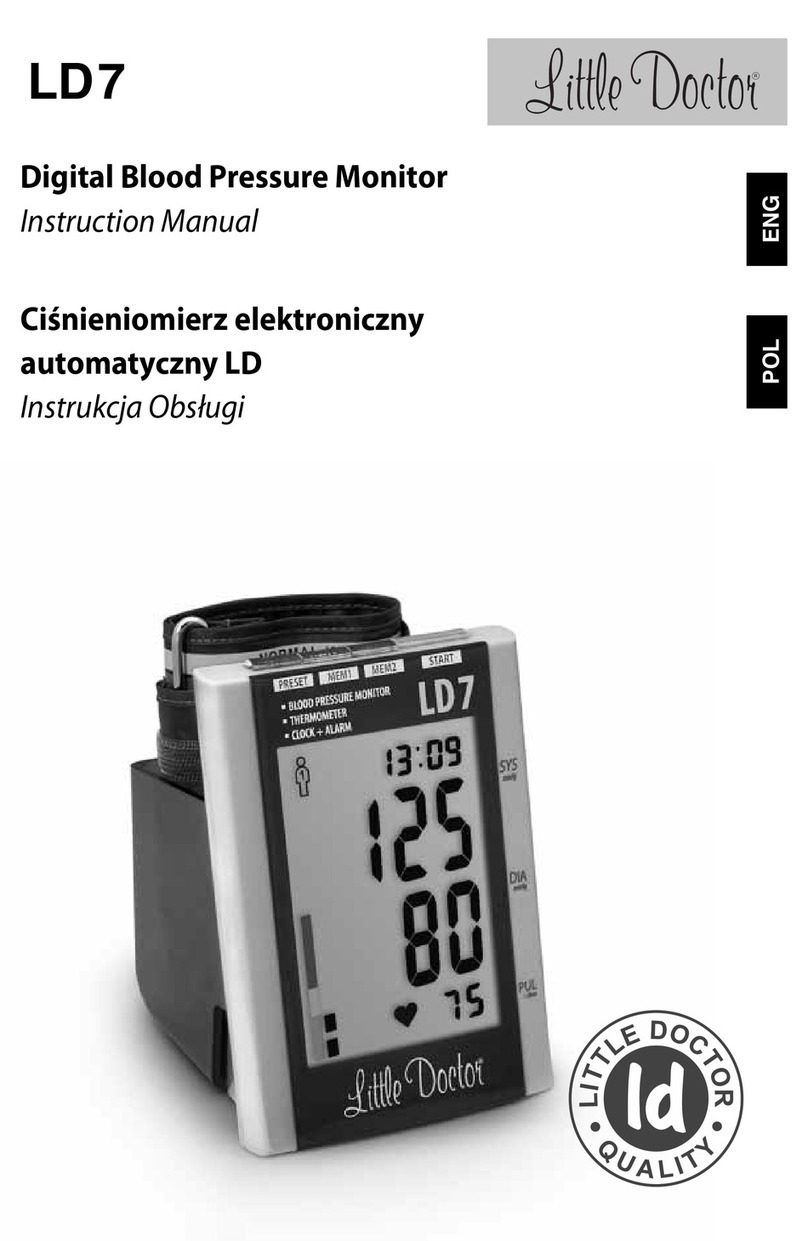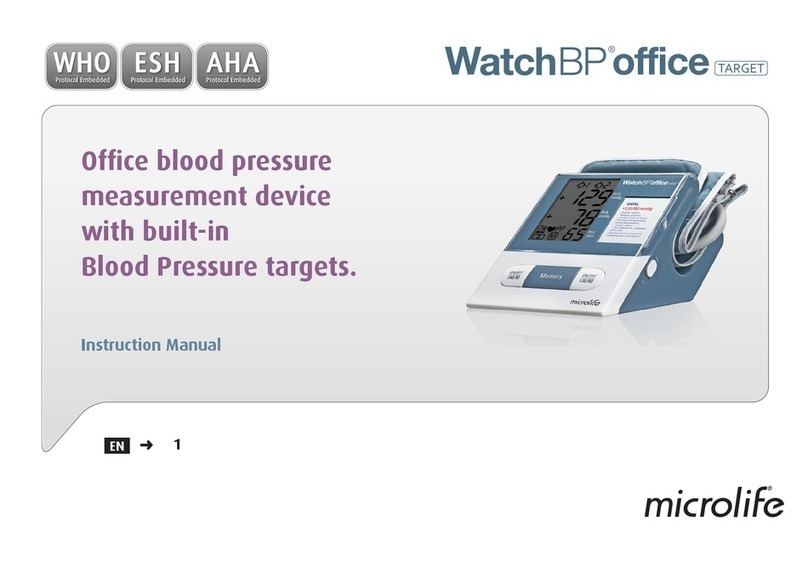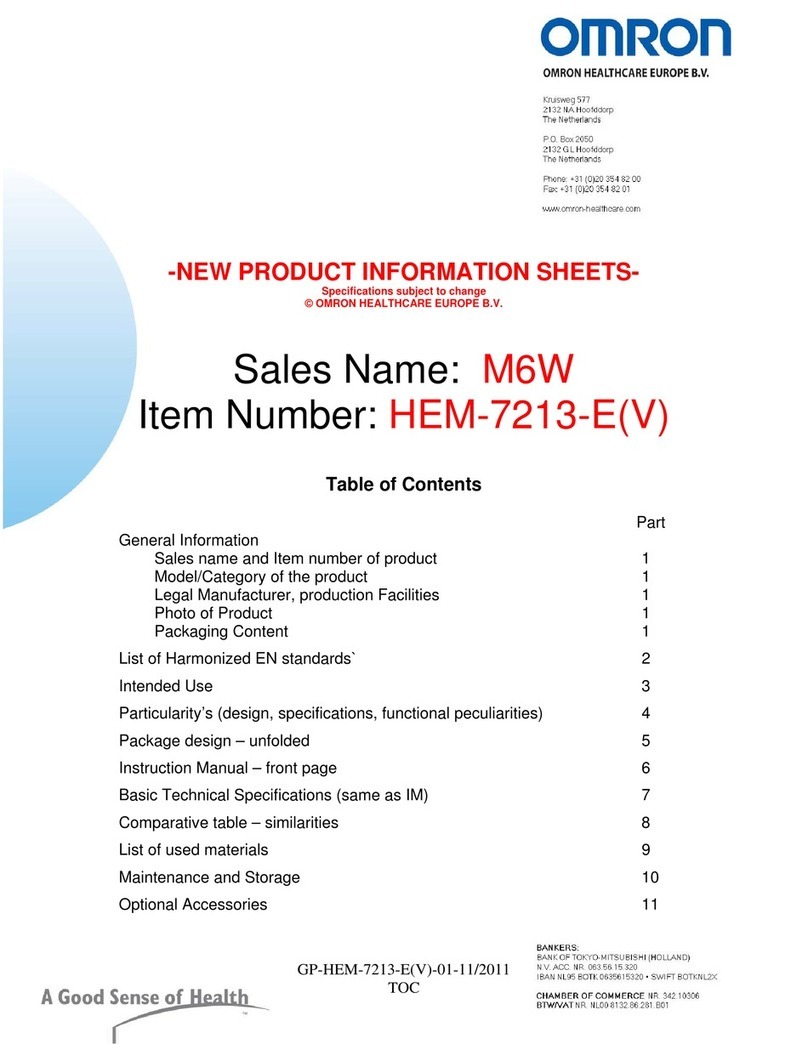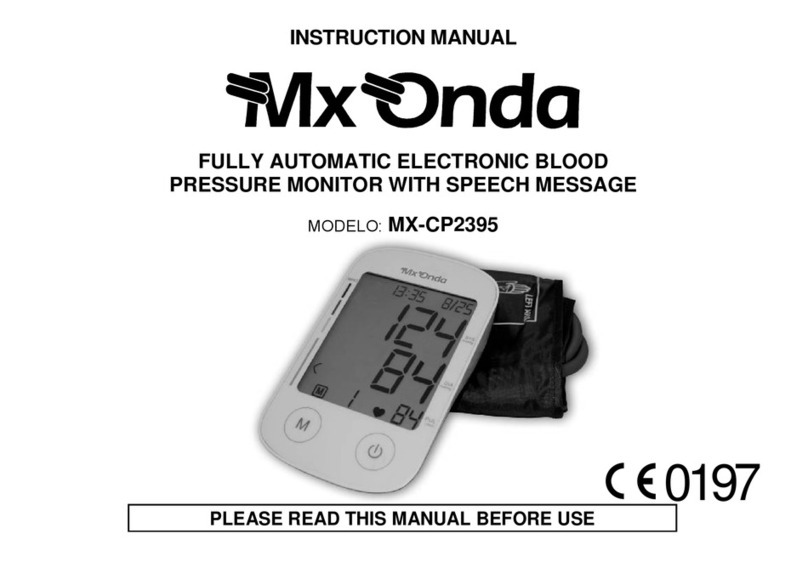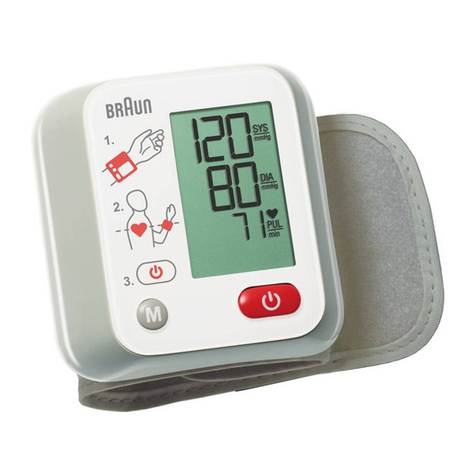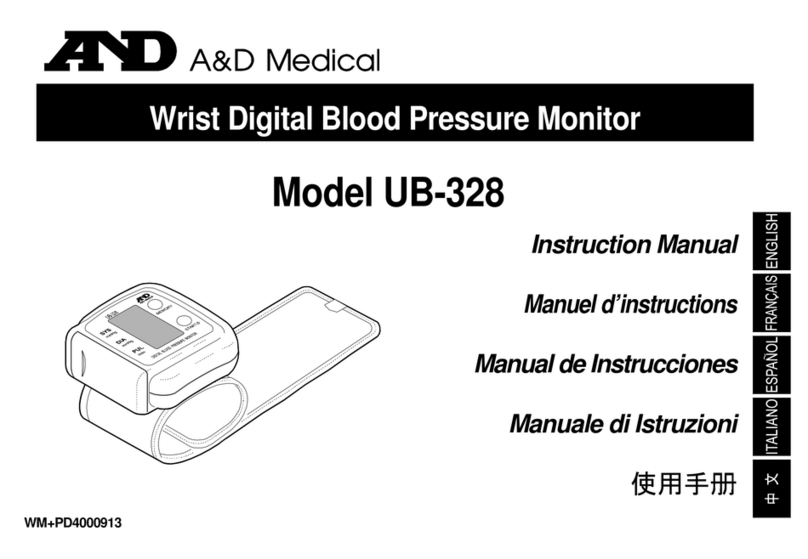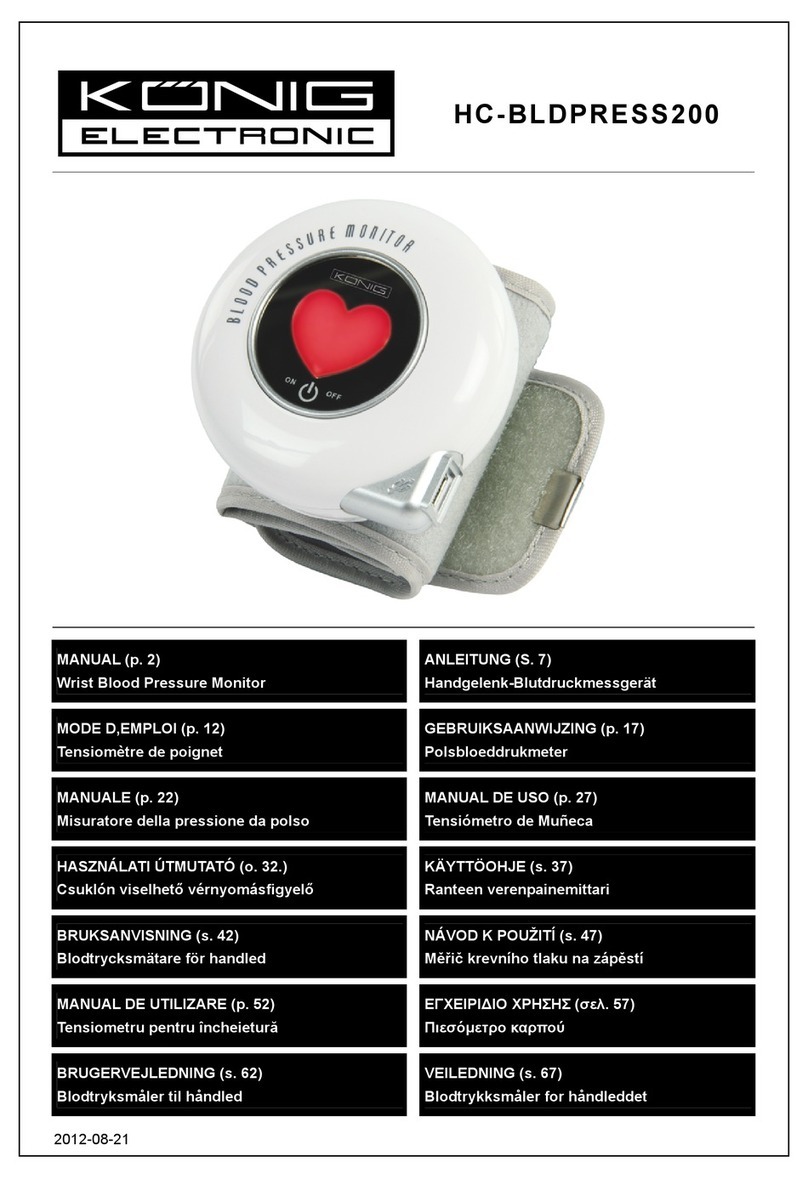Dear FORA P30 Plus System Owner:
Thank you for purchasing the FORA P30 Plus Blood Pressure
Monitoring System. This manual provides important information to help
you use the system properly. Before using this product, please read and
follow the instructions in this Owner's Manual.
According to the clinical studies from the American Diabetes
Association, elevated blood pressure often accompanies adult diabetes
patients. These studies also suggest that diabetes patients could
reduce the risk of cardiovascular diseases by managing their blood
pressure. With the use of this FORA P30 Plus Blood Pressure
Monitoring System, you can easily monitor your blood pressure by
yourself. In addition, this system can help you and your healthcare
professionals monitor and adjust your treatment plans, and keep your
blood pressure under control.
If you have questions, just call ForaCare Customer Care Service Center
toll-free at 1-888-307-8188 (8:30 am - 5:00 pm PST, Mon. - Fri.). You
can also visit www.foracare.com.
Version 2.0 2018/03
311-3129200-008
English


